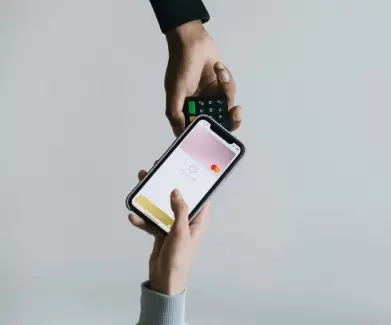The growth of technology, the search for increasingly personalized products and the uncertainties of the future: discover the Global Consumer Trends for 2023!
We keep a close eye on recurring industry news, interpreting and analyzing market research carried out annually by specialized institutes. Here are the main insights into global consumption this year.
Overview
In the last two years, consumers have been community-minded, putting their own needs on the back burner to prioritize health and public safety. Once the pandemic is over, in 2023 people will be eager to focus on themselves again, with brands being able to help them take center stage for years to come.
"Me" mindset
The pandemic has disrupted much of the routine, leaving people with the opportunity to redefine themselves. Brands around the world are recognizing the growing need for individuals to solidify and celebrate their individuality, as they are acting on the idea that they don't have to be the way they were in the past.
Consumers are ready for an increase in trust, and it is the role of brands to provide new experiences or products that feed their curiosity as they form new tastes, routines and preferences that align with who they are or want to be.
According to research carried out by Mintel:
"Consumers are putting themselves at the center of their lives."
- 50% of Chinese adults who follow fitness culture agree that their interest has affected their attitude to life;
- 44% of Generation Z in the US agree that finding ways to celebrate has become more important to them now than before the COVID-19 pandemic;
- 25% of UK consumers who have taken up a hobby/interest in the last 12 months have adopted it as a form of creative expression.
What's next?
Consumers will want to move quickly to make up for lost time, immersing themselves in their favorite activities with enthusiasm, looking for personalized products or services that match their skill level. On the other hand, they will be looking for ways to become more resilient to change while preparing for the uncertainties of the future. Demand for products focused on mental health and well-being will grow as they seek to understand their "blind spots" and actively work to overcome them.
Check out the survey conducted by Mintel:
"Consumers need help to fill the gaps with offers that make it easier to acquire and grow skills."
- 64% of Generation Z teens in the US agree that they feel they have lost two years of their lives because of the COVID-19 pandemic;
- 45% of Thai consumers agree that new technology products/services that can be incorporated into their daily lives would be attractive;
- 43% of Chinese consumers agree that the uncertainties in their lives have led them to pay more attention to improving personal skills (work, study, etc.).
The metaverse should be used to develop unique identities that match each person's digital environment. The result will be fragmented identities, in which they construct and express different parts of themselves online, depending on the platform or context in which they are working. As a result, there will be a greater movement for data privacy and consumer protection.
Power to the people
Companies are adapting to a new model, where the consumer plays a role as co-creator. Popular social platforms such as TikTok prioritize self-expression, leading people to develop and show their creativity while carrying out various activities. In this way, brands are harnessing this creative spirit in their product development processes, showing their commitment to collaboration through creative positions that are often filled (albeit symbolically) by celebrities, influencers, children or ordinary product users.
According to a survey carried out by MINTEL on the subject: "The growing power of influencer marketing, it was observed that:
- 41% of UK consumers agree that direct-to-consumer brands have a more personal connection with customers than traditional brands;
- 37% of US social media users who follow influencers say they follow niche bloggers;
- 20% of German social media users follow influencers full-time on social media, compared to 5% who follow business leaders.
Hyperfatigue
The rising cost of living, the energy crisis, geopolitical unrest and the climate crisis have affected and will continue to affect people, causing fatigue and a sense of oppression.
Technology plays an important role in people's lives. On the other hand, many are concerned about its excessive use, observing negative impacts on mental well-being and consequently wanting to reduce screen time. Many people are still not convinced of the real benefits of spaces such as the metaverse, NFTs or cryptocurrencies, which can make them feel disengaged.
A survey carried out by Mintel showed that last year American consumers said they had tried it:
- 49% Stress;
- 38% Anxiety;
- 22% Mental exhaustion;
- 20% Burnout.
Retreats that offer a "digital detox" and the opportunity for people to go deeper into nature will appeal to some, while others navigate their wellbeing through apps. Charity initiatives and community projects born out of collaborations will play an intrinsic role in combating fatigue levels, empowering people to take control and helping them to build a positive outlook amid financial adversity.
While mental health has led the wellness trajectory, consumers will want to find out more about how to protect their minds and bodies through spiritual practices, as well as emerging wellness solutions that are on the horizon.
The demand for convenient options and interactive experiences will continue to grow, which means that technology will play a vital and influential role in everyone's experiences. In five years' time, brands will need to establish boundaries to order the flow of information, as well as initiatives that allow healthy connections to be established with the resources of technology, wellness and leisure spaces.
International Localism
Many consumers associate local products with more sustainable practices, leading retailers to cultivate this connection by taking advantage of the shorter distances their local products need to travel. Brands are being transparent about where and how their products are made, allowing shoppers to see behind the scenes through live streams, social media posts and QR codes.
Over the next two years, individuals will continue to grow more connected to their local environment as the world faces increasing geopolitical and financial insecurity. Many will continue to support local economies, communities and seek ways to connect locally, deepening the spirit of shared identity.
"Localism" will come to mean supporting the communities where the product is manufactured and not where the consumer is located. In fact, empowering communities around the world will play a significant role in brand interest and loyalty.
According to Mintel, a survey on "Consumers prefer socially responsible companies and brands" showed that:
- 91% of Chinese consumers say they are likely to buy from a brand that demonstrates social responsibility;
- 60% of American consumers prefer to be associated with companies/brands aligned with their values;
- 45% of UK consumers say they prefer to get involved with institutions/companies that promote equality.
Brands will re-evaluate their supply chains and dependence on other countries. In the long term, this will lead to the exploration of strategic shifts towards the use of domestic raw materials or at least a more diversified supply structure. With the impacts of global warming, more shoppers will examine whether global brands take their local commitments seriously.
Intentional Spending
Consumers are refocusing on what value means to them and spending intentionally as a result. In a difficult economic environment, they want to make smart financial choices without sacrificing quality of life. Flexibility, durability and sustainability will play increasingly important roles in the value equation.
Regarding how consumers are coping with rising prices, the survey carried out by Mintel revealed that:
- 71% of Thai consumers say that spending less on groceries has become a priority since the start of the pandemic;
- 45% of US consumers who buy certain personal care products say they have chosen an alternative product/brand because of price increases in the last year;
- 39% of UK consumers who have bought fashion items in the last 12 months say that they can be used for a variety of occasions;
- 37% of Chinese consumers who shop at supermarkets spent less on eating out in September 2022 compared to the previous month.
In the next 18 months to 2 years, expect changing circumstances to lead to changes in habits and lifestyles. There will be a greater focus on durability, flexibility and timelessness, and brand transparency will be evaluated much more rigorously.

